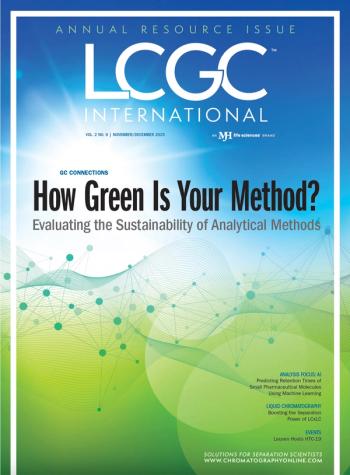
- The Column-02-06-2019
- Volume 15
- Issue 2
Elevated Uranium Concentrations Found in Groundwater of Rio de Janeiro Region
Researchers from the PUC-Rio in Rio de Janeiro, Brazil, have found unexpectedly high uranium concentrations in groundwater samples from the mountainous region near Rio de Janeiro City.
Researchers from the Pontifícia Universidade Católica do Rio de Janeiro (PUC-Rio) in Rio de Janeiro, Brazil, have found unexpectedly high uranium concentrations in groundwater samples from the mountainous region near Rio de Janeiro City (1). The samples contained up to 930 µg/L of uranium, approximately 30 times higher than the World Health Organization (WHO) guidance level. The figures were a cause for concern because the area contains a large amount of tourism and water-related industries, such as mineral water and breweries.
Despite its radioactive nature, the main concern from elevated uranium elements derives from its chemical toxicity, rather than its long-term radiological toxicity (2). The main threat from elevated levels of uranium being impaired kidney function (2).
Samples originating from the Rio De Janeiro state mountainous region were analyzed at PUC-Rio’s Water Characterization Laboratory (LABAGUAS), including physical-chemical assays and the determination of major cations and anions by ion chromatography, and trace elements by inductively coupled plasma–mass spectrometry (ICP-MS).
Researchers found elevated uranium concentrations in groundwater in seven of the 16 counties belonging to the Rio De Janeiro state. The wells with elevated uranium concentrations also presented high radon content, and 210Pb concentrations above the WHO guidance level of 0.1 Bq/L These findings are particularly worrying as the drilling of deep artesian wells is a growing trend in the region; researchers recommend that any new wells deeper than 80 m have mandatory testing for uranium and 222Rn as well as further studies on existing wells.
References
- J.M. Godoy et al., J. Braz. Chem. Soc.30(2), 224–233 (2019).
- B. Smith, British Geological Survey www.bgs.ac.uk/downloads/start.cfm?id=416
Articles in this issue
almost 7 years ago
Tips to Boost Your Trace Analysis Skillsalmost 7 years ago
Latest Advances in the Analysis of Complex Environmental Matricesalmost 7 years ago
Tips & Tricks GPC/SEC: System Peaks or Ghost Peaks in GPC/SECalmost 7 years ago
Innovations in Ion-Exchange Chromatography for mAb Variant Analysisalmost 7 years ago
Characterizing Polydisperse Cellulose Nanocrystals Using AF4-MALSalmost 7 years ago
Chiral Announces Arbor Acquisitionalmost 7 years ago
Investigating Serotonin in Nuts Using UHPLC–MS/MSalmost 7 years ago
Vol 15 No 2 The Column February 2019 North American PDFalmost 7 years ago
Vol 15 No 2 The Column February 2019 Europe & Asia PDFNewsletter
Join the global community of analytical scientists who trust LCGC for insights on the latest techniques, trends, and expert solutions in chromatography.



